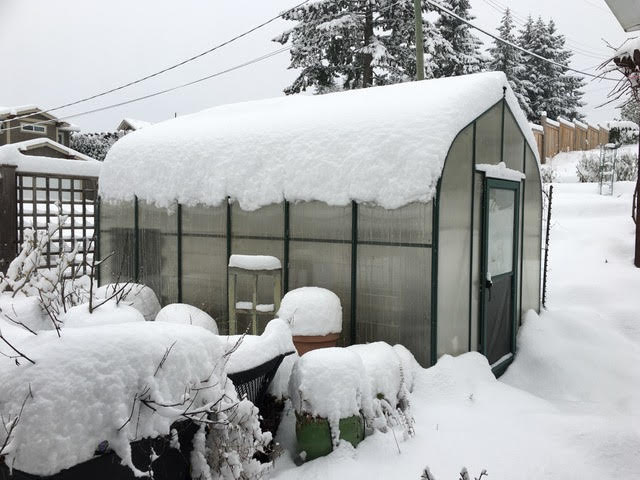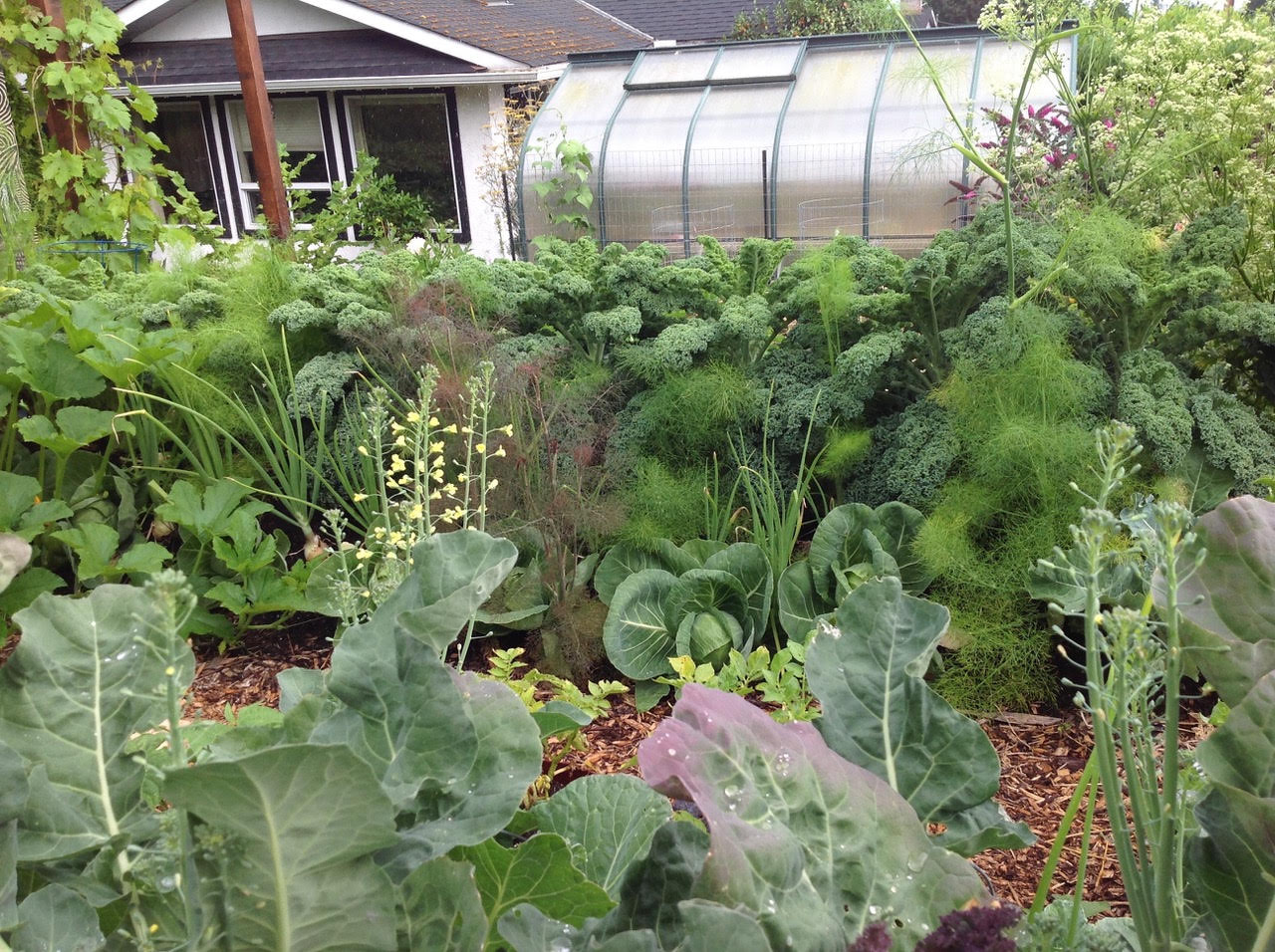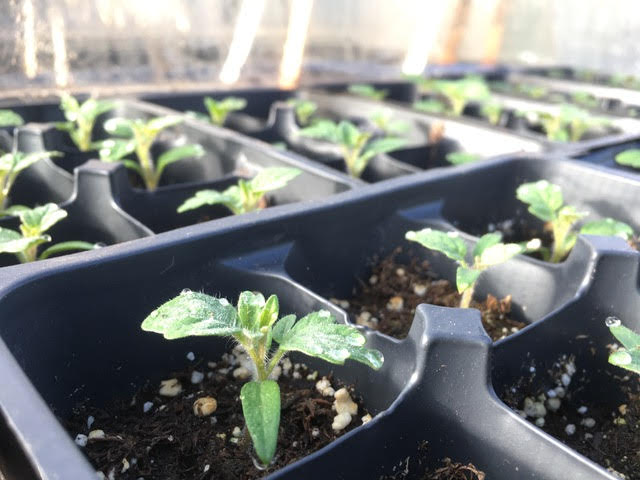5 Tips for Keeping Your Greenhouse Toasty this Winter

Keeping Your Plants Cozy This Holiday Season

Imagine my surprise when a small hole we drilled through our greenhouse foundation became a runway for mice. We pulled an extension cord into my greenhouse through that hole and the tiny gap became a neon sign for rodents.
The grandchildren, fascinated by mom and her naked babies, watched carefully as the whole mouse family was carefully moved from a greenhouse pot, where they were living, into a big cardboard box in our utility trailer. “We are taking the whole family to the country,” I lied.
Well, the dump is in the country so I guess it was more of a fib than a lie. But lesson learned.
When I moved my greenhouse, I changed things up a bit. We dug a trench from our house, ran wiring underground and hard-wired a plug inside the greenhouse. We haven’t seen a mouse since.

Inside the greenhouse even the hardy crops need an extra layer on cold days. Here Agribon is draped over small plants
The plug inside my greenhouse is now my secret to winter plant survival in the greenhouse. Hardy plants don’t need much help but in spring, especially, tender seedlings like tomatoes need help on cool evenings and fans on warm days. So, I insist all my friends add electricity to their greenhouse. And it’s not just about mice, it is about keeping plants cozy in the cold season and well-aerated year-round.
If you want to keep plants thriving, I always suggest the simple electric plug.

Here are five more tips for keeping your greenhouse toasty this winter:
Grow Cold- Tolerant Plants Over Winter
Don't wear your bathing suit to the ski hill. Wear your bathing suit to the tropics or hot tub and keep your heat-loving tropical plants, like basil, orchids, coffee, and most houseplants inside your home for the winter. Temperate plants, like Meyer lemons, hardy cactus, and olives tolerate light frost. Hardy vegetables, like spinach, mustard greens, arugula, kale beets, carrots, and swiss chard also thrive in a cool greenhouse and can freeze completely and spring back to life when conditions warm up. I try to keep my greenhouse at or around 0 C, 32 F, in the winter.
.jpg?width=1200&length=1200&name=spinach%20(1).jpg)
Add A Scarf
Providing heat just where you need it is easily accomplished with old-school Christmas lights or soil warming cables. Scrounge around your grandpa's attic or visit the local thrift store for old lights. They actually give off heat when temperatures drop quickly. I lay the waterproof soil warming cables on the soil and set potted plants over the heat for happier winter plants.
.jpg?width=1200&length=1200&name=unnamed-1%20(1).jpg)
Consider A Few Hand Warmers
A thermostat with a plug-in for your lights as well as a space heater will keep the chill off the plants
 when the temperatures really dip low while you are tied up in your office or fast asleep late at night. If you simply depend on a heater, you'll get home from work on a sunny winter day and find out you have been heating the outside air all day while your vents are wide open to cool off the space. A thermostat is a must to provide heat and use only the electricity you need to keep your plants happy. You set the temperature and keep it just warm enough in the winter. You don't need o try and make your greenhouse feel like Belize in May. You want to keep your hardy plants out of deep freeze. The thermostat will help to regulate the heater, turning it on as needed and then turning it off when the solar effect of your greenhouse kicks in during the day.
when the temperatures really dip low while you are tied up in your office or fast asleep late at night. If you simply depend on a heater, you'll get home from work on a sunny winter day and find out you have been heating the outside air all day while your vents are wide open to cool off the space. A thermostat is a must to provide heat and use only the electricity you need to keep your plants happy. You set the temperature and keep it just warm enough in the winter. You don't need o try and make your greenhouse feel like Belize in May. You want to keep your hardy plants out of deep freeze. The thermostat will help to regulate the heater, turning it on as needed and then turning it off when the solar effect of your greenhouse kicks in during the day.
Layer Up
Your BC greenhouse has an air space built into the polycarbonate cover, but as mom always says, "wear an extra layer" to keep warm. The same thinking applies to your greenhouse. Adding a layer of Agribon adds 2-7 degrees of frost protection, depending on the weight of Agribon you use. Higher numbers like Agribon 30 give more frost protection than lower numbers like Agribon-19. And this low-tech solution to growing in winter just got better

This year, my helpful husband built a mini greenhouse inside my big greenhouse for seasonal protection of my tender oranges. Unlike lemons, oranges and grapefruits need it to be at least 5 C (41 F), so we covered the whole warm citrus area with Argibon and plug a small heater to our Thermostat. This is different from our lemons. They have Christmas lights and a quick wrap of Agribon.
I also cut lengths of Agribon and lay it over the rows of plants growing in pots or in the ground. I roll it up as the weather improves but I don't put it away completely until all danger of cool weather is past. Then I wash it, fold it and put it away for the summer.
.jpg?width=1200&length=1200&name=hardy-crops-under-fleece%20(1).jpg)
Don't Forget to Breath
Moving air is less likely to freeze than air trapped in cool corners of pockets of the greenhouse. Running a fan continuously in your greenhouse, winter and summer, keeps the air moving and prevents cold zones from affecting areas and parts of plants in winter. In summer, it keep things cooler. Air blowing over plants also keeps them stronger and sturdier.

Hardy winter salad from the greenhouse includes spinach, chives and purple cabbage


